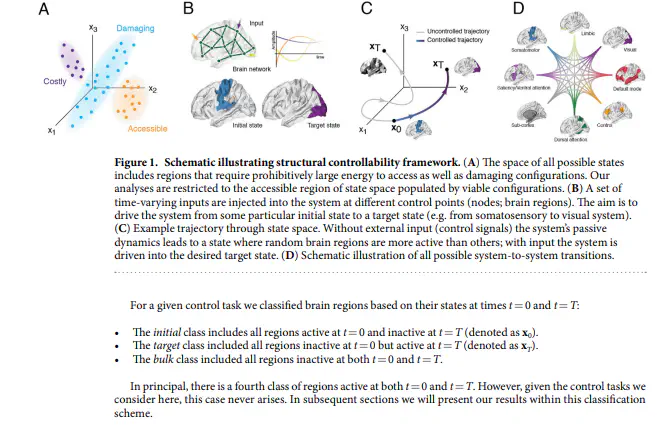Optimally controlling the human connectome:the role of network topology

Abstract
To meet ongoing cognitive demands, the human brain must seamlessly transition from one brain state to another, in the process drawing on different cognitive systems. How does the brain’s network of anatomical connections help facilitate such transitions? Which features of this network contribute to making one transition easy and another transition difficult? Here, we address these questions using network control theory. We calculate the optimal input signals to drive the brain to and from states dominated by different cognitive systems. The input signals allow us to assess the contributions made by different brain regions. We show that such contributions, which we measure as energy, are correlated with regions’ weighted degrees. We also show that the network communicability, a measure of direct and indirect connectedness between brain regions, predicts the extent to which brain regions compensate when input to another region is suppressed. Finally, we identify optimal states in which the brain should start (and finish) in order to minimize transition energy. We show that the optimal target states display high activity in hub regions, implicating the brain’s rich club. Furthermore, when rich club organization is destroyed, the energy cost associated with state transitions increases significantly, demonstrating that it is the richness of brain regions that makes them ideal targets.